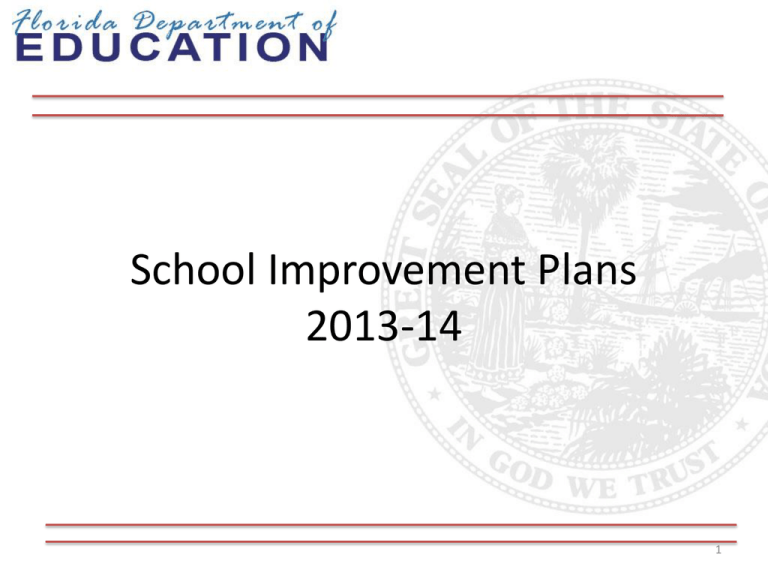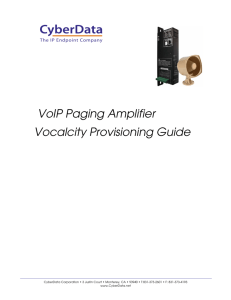School Improvement - the School District of Palm Beach County
advertisement

School Improvement Plans 2013-14 1 What is our vision for school improvement planning? The Vision A collaborative, data-based problem-solving and planning process in every school and district which leads to increased student achievement, facilitated by an online tool configured to: Progress Reduce administrative burden by consolidating and aligning various required state and federal plans Improve local decision making by presenting Florida’s current and emerging data sources (school grades, FCAT, value added model, interim assessments) to principals and district administrators in the context of focused planning and problem solving Increase the degree to which successful local innovations are shared across Florida’s districts. School Improvement Plan Components Problem-Solving 2 How are we moving toward this vision in 13-14? • Compliance burden on districts and schools is reduced School Improvement The Vision • All requirements of the Title I Schoolwide and Targeted Assistance plans are satisfied by the SIP Progress Plan Components Problem-Solving • The SIP is completed online, allowing users to edit as needed throughout the year, aggregate and analyze information, and more easily monitor implementation • The 8-step problem-solving process brings focus 3 What are the components of the SIP? Part I: School Information— School Improvement The Vision Progress SIP Components Problem-Solving • • • • • • • • • School Contacts School Advisory Council Highly Qualified Staff Multi-tiered System of Supports/RtI Increased Learning Time/Extended Day Literacy Leadership Team Every Teacher Contributes to Reading Improvement Preschool Transition College & Career Readiness 4 What are the components of the SIP? Part II: Expected Improvements — School Improvement The Vision Progress SIP Components Problem-Solving Area Reading Writing Mathematics Science STEM CTE Early Warning Systems Parent Involvement Other 12-13 Actual 13-14 Target # % # % # % # % # % # % # % Narrative Narrative % % % % % % % Narrative Narrative 5 What are the components of the SIP? School Improvement The Vision Part III: Coordination and Integration (Title I Requirement) – describe how the school coordinates funds provided by various Title programs to meet common goals Progress SIP Components Problem-Solving Part IV: Professional Development – outline pd activities that were identified to meet goals (will be tagged to strategies created in Part II, if identified as a pd item) Part V: Budget – create a budget for each schoolfunded activity identified to meet goals (will be tagged to activities created in Part II, if identified as a budget item) 6 What is the difference between a Target and a Goal? School Improvement The Vision Progress SIP Components Problem-Solving For the purposes of the SIP, targets are numeric measures in each content area Target Example: Students scoring at level 3 on FCAT 2.0 Reading = 70% Goals are measurable but may not be numeric; goals should support 1 or more targets and may cross content areas Goal Example: Increase student engagement during instructional delivery through the use of purposeful peer-to-peer discourse. If we problem-solve and create an action plan for this goal, what targets will increase as a consequence? 7 What is the 8-step problem-solving process? 8 What is the Mid-Year Reflection? Has the goal been achieved? If yes, based on what evidence? If no, is progress being made? If yes, based on what evidence? If no, have barriers been eliminated or reduced? If yes, based on what evidence? If no, are strategies implemented with fidelity? If yes, re-engage the problem solving process at Step 4 If no, problem solve around implementation fidelity 9 Questions? Bureau of School Improvement Contacts: • Jenna Evans – jenna.evans@fldoe.org • Shannon Houston – shannon.houston@fldoe.org 10







